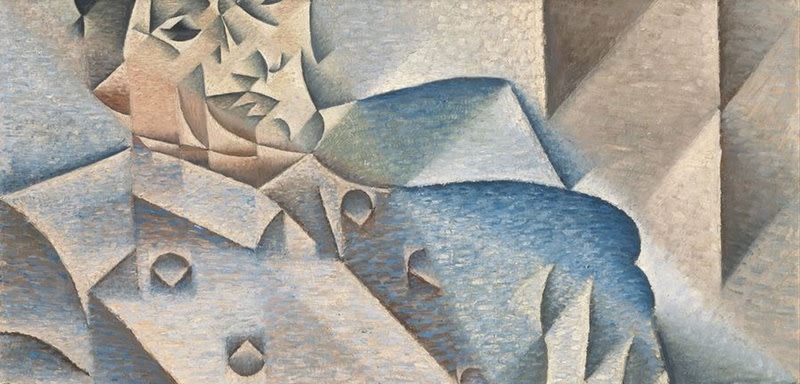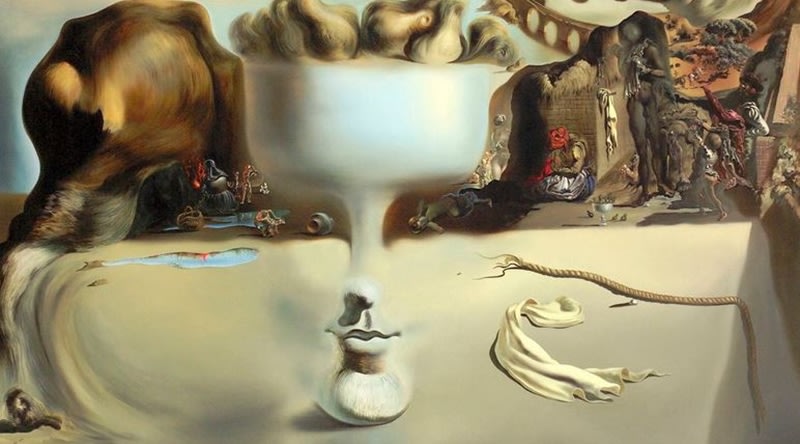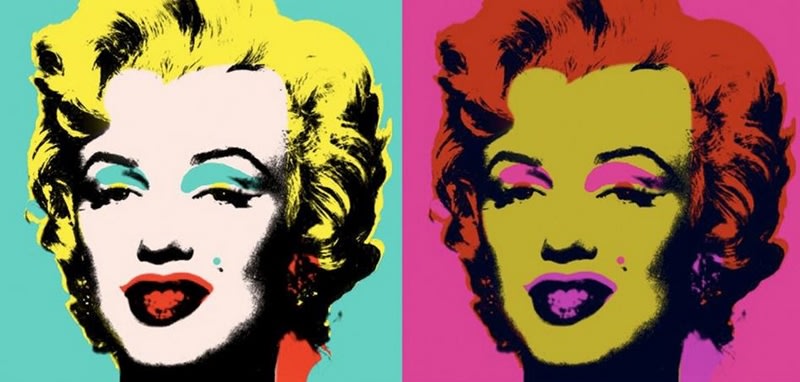Schools of Modern Art
The art of the 20th century and onwards has its roots in modernism, an all encompassing term that describes the huge changes in Western society beginning from the late 19th century. The Industrial Revolution, the writings of thinkers and scientists like Charles Darwin, Karl Marx, Sigmund Freud and Albert Einstein and finally, the upheaval of World War I, changed society's perceptions about itself. These changes were reflected in literature, painting and the performing arts.

Cubism
Art in the early years of the 20th century was about rebellion and unshackling of the rules, traditions and perspectives that had governed painting since the Renaissance. This radical, new direction expressed itself in abstraction; like other intellectual movements of the late 19th century, it took root in Paris, the cultural hub of the Western world.
1907 was a landmark year in the history of Western art, when Pablo Picasso unveiled his Demoiselles d'Avignon. The painting represents several nudes in angular shapes, imbued with a raw and startling primitivism reminiscent of African masks. The event heralded a step towards Cubism.
Cubism was pioneered by Georges Braque and Picasso. This art movement expressed the artist's urge to go beyond externalities. The structure of form was all important; hence, the emphasis on lines, angles and minimal use of colours, so as not to distract from the essence of the subject. Cubism lasted for about eighteen years, evolving into various sub-forms like analytical and sculptural cubism.
Dadaism
Cabaret Voltaire, a cafe in Zurich set up in 1916 by exiled German poet Hugo Ball, was where the art movement known as Dadaism took shape. The cafe was a centre for musicians, artists and writers to meet and exchange ideas on artistic freedom. Many of them were battle-weary veterans of the First World War. Their work was marked by a rude, cynical rejection of traditional values in art, a reflection of their disillusionment with life. Marcel Duchamp's LHOOQ, showed Mona Lisa with a moustache. His Fountain was a sculpture of a urinal, the rationale being that anything that was exhibited for a viewing public could be termed as art! Dadaism was too incoherent a movement to last for long; however, during its brief 4-year existence, it succeeded in its intent to shake up the art world. It is considered a precursor to Surrealism.

Surrealism
In the 1920s, artists and writers sought to move away from the philosophy of 'rationalism' which had for long shaped European thought and resulted in the devastation of World War I. Surrealism was the intellectual movement that represented this rejection of the past. Where Dadaism had been defiant and anti-art Surrealism was more positive. It's most important proponent was the poet-critic Andre Breton. In The Surrealist Manifesto of 1925, Breton wrote on the significance of the subconscious mind as the primary source of creativity. In art, this translated into paintings that blended fantasy and reality, the impossible and illogical with the mundane and rational. Famous Surrealist painters include Max Ernst, Paul Klee, Salvador Dali, Joan Miro and Andre Masson.
Surrealism has inspired modern photography and films and continues to delight art lovers thanks to its vivid, playful and spontaneous imagery that never fails to stretch the imagination.
Abstract Expressionism
In 1930, Piet Mondrian's Composition with Red, Blue, and Yellow captured the essence of Abstract Expressionism, a genre that expresses itself purely through primary shapes and colours. The movement crossed the Atlantic and gained widespread recognition through the works of American artists like Jackson Pollock, Lee Krasner, Mark Rothko, Barnett Newman, Robert Motherwell and others. The new art form, while influenced by Surrealism, went deeper within, emphasising that the artist's inner, creative process is as important as the work itself. Pollock's paintings for instance blasted away all preconceived notions of art. Leaving easel painting aside, he would work on canvas on the floor, using industrial materials and a variety of imaginative techniques, from dripping skeins of paint to brushing, drawing and staining. After prevailing for nearly three decades, Abstract Expressionism began giving way to Pop Art.

Pop Art
There are few people today who haven't heard or come across Andy Warhol¿s iconic painting of a Campbell soup tin. This was Pop Art, an American movement originating in the 1960s whose best known exponents besides Warhol were Roy Lichtenstein and Tom Wesselmann. Pop art, like pop music, shifted these hitherto elitist pursuits into the purview of the masses. Pop Art is tongue-in-cheek, irreverent in its outlook, turning household and daily use objects into the subject of artistic scrutiny, as if to say 'Why not?' Andy Warhol's studio was 'The Factory', where workers made countless lithographs and silkscreen prints of his works. Ironically, both the subjects of Pop Art and the genre itself were now mass produced, pointing to the beginnings of consumerism.
Postmodern Art
Eclectic, thought provoking and often lowbrow, postmodern art encompasses a huge variety of genres. Installation Art comprises enormous collages of manufactured and other objects, sometimes electrified or possessed of moving parts. Neo-expressionism, which began in the 1970s and 80s - famous names include Julian Schnabel and Georg Baselitz - is a return to more traditional genres of sculpture and painting. Performance art - not to be confused with traditional performing arts (dance, music, gymnastics, etc.) elevates physical performance by an individual or a group into a work of art. Pop surrealism has its roots in American subcultures, inspired by comic books, punk/rap music and street life. This irreverent, essentially youthful genre is a potent example of the lack of distinction that is prevalent today between high and low art.
Look for artworks executed in different styles in the bobshop art category.